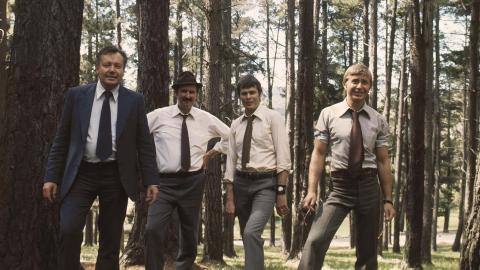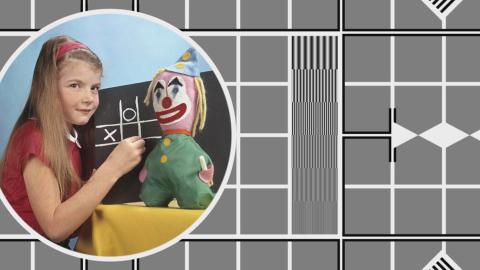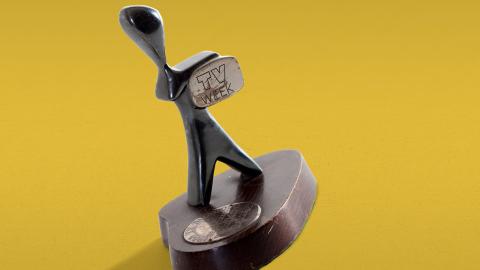
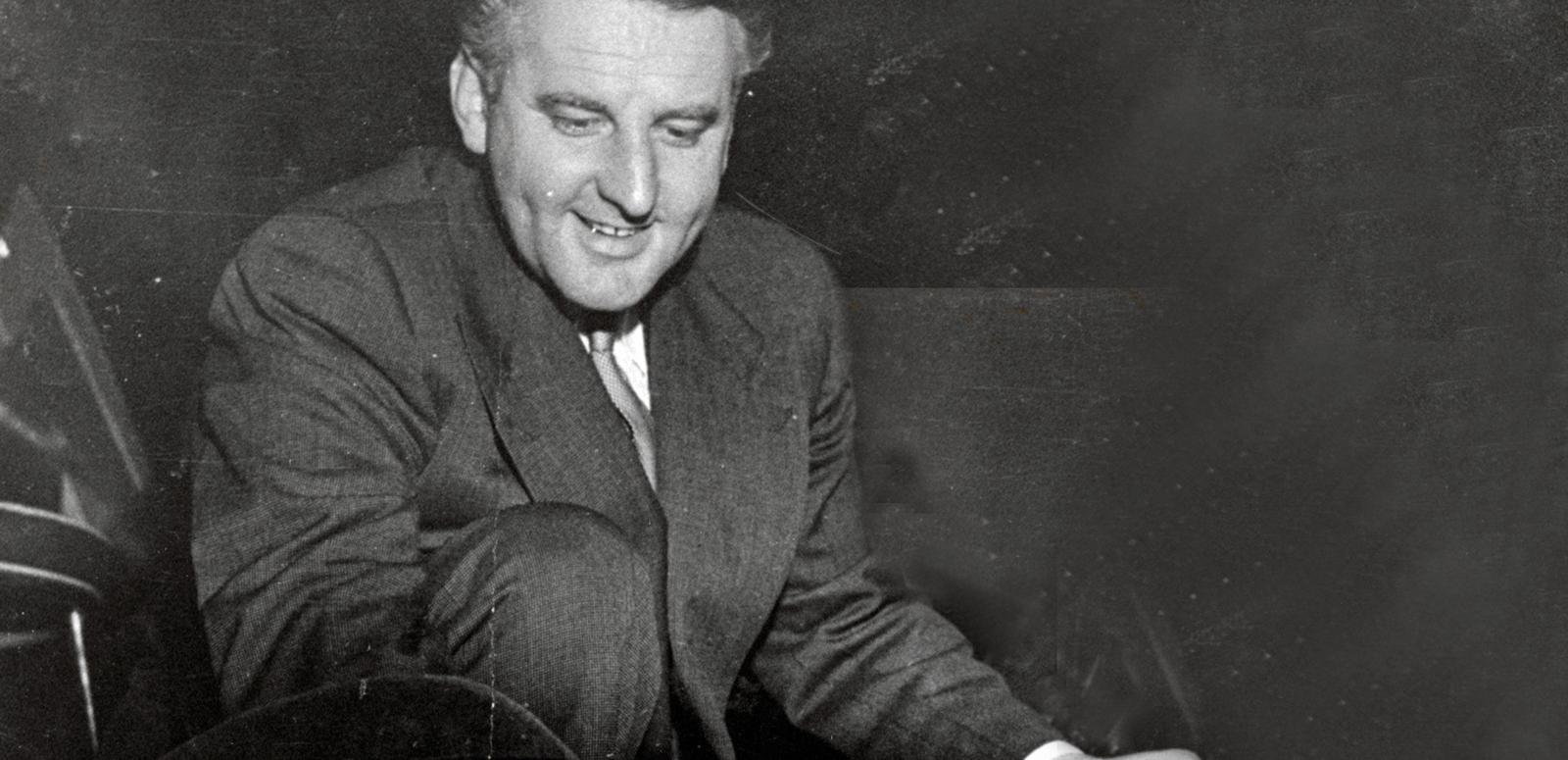
The legacy of Hector Crawford
On the 100th anniversary of the birth of Hector Crawford in the Melbourne suburb of Fitzroy, it is timely to reflect upon his audiovisual legacy – which is preserved in the NFSA collection – and his contribution to Australia’s cultural life.
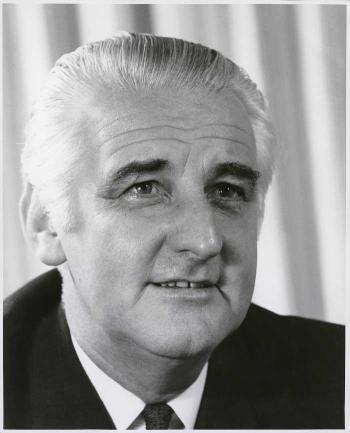
A hint of his capacity, talent, and philanthropy was evident at the beginning of his public career when, in 1938, 25-year-old Crawford inaugurated the free public music concert series, Music for the People.
Music for the People was held in Melbourne’s Royal Botanic Gardens, sponsored by the Victorian State Government and the Melbourne City Council, with Hector as director and conductor of the Melbourne Conservatorium Symphony Orchestra (later known as the Australian Symphony Orchestra). The concerts were broadcast on Radio 3DB and in 1959 became one of HSV 7 television’s early ventures into outside broadcasting. They were also used as fundraisers for organisations supporting injured service personnel during the Second World War.
This tradition continued for 40 years and, over later times, was incorporated into Melbourne’s Moomba Festival with performances at the Sidney Myer Music Bowl. The concerts always attracted large crowds, but perhaps its zenith was in 1967 when 200,000 people flocked to the concert to see The Seekers perform. Hector’s enduring passion for music, his commitment to bringing Australian talent to the attention of the general public and his desire to popularise classical music were themes across his career via Music for the People, Opera for the People, Music Under the Stars and in concerts for the winners of his radio and TV music talent shows, Mobil Quest (1949-1957) and Showcase (1965-1968, 1973-1974, 1978).
Radio days
It was however in the broadcasting arena that Hector would make his greatest impact on the lives of Australians. Hector’s first position in radio was as musical director of the radio production company Broadcast Exchange and, by 1941, he had become the manager.
It was here that Hector would also meet and discover his future wife, renowned Australian soprano Glenda Raymond, whom he married in 1950.
Listen to Glenda Crawford’s (nee Raymond) description of Hector’s entry into radio in this oral history interview conducted by ex-Crawford staffers Jan Bladier and David Lee, on 8 January 2002. In this interview Glenda discusses the mentorship of David Worrall from Radio 3DB, and the establishment in 1945 of Crawford’s radio production company, Hector Crawford Productions, as well as the romantic story of how she and Hector first met.
Hector Crawford Productions was formed in partnership with Hector’s older sister, Dorothy Muriel Turner Crawford. Dorothy was a talented singer with a contralto voice; a radio actor, producer, and newsreader for ABC radio. Together, Hector and Dorothy would go on to produce many of Australia’s most fondly remembered radio productions during its golden age, across a range of genres, including the serials The Melba Story (1946), D24 (1951), and Inspector West (1952-1959), which ran for 728 episodes and was the longest running of their radio serials.
They also produced the interview program Respectfully Yours (1951) and, of course, the highly successful radio talent show Mobil Quest (1949-1957). This program would bring to Australia’s radio waves the talents of Dame Joan Sutherland, who won the Mobil Quest in 1950, and June Bronhill, who came third in 1951.
Enter television
By this time the media environment was changing and Dorothy and Hector began preparing themselves and their staff for the introduction of television in 1956. They went overseas to study television production techniques and on their return established a training facility at the St James Old Cathedral in West Melbourne. The facility included a closed circuit television studio and here their staff learned to think, write, and act in terms of the new visual medium. Hector’s commitment to media education and the nurturing of talent would resonate throughout his career. In 1973 he was appointed to the inaugural board of the Australian Film and Television School and, in 1974, to the interim board of the Australian Film Commission.
The renamed company, Crawford Productions, was one of the few to successfully make the transition from radio to television; however, it was not easy at the start. Hector had to mortgage his home and he and Dorothy went without salaries for a year.
While television dramas such as The Sullivans (1976-1982), All The Rivers Run (1983, 1990) and their police series Homicide (1964-1976), Matlock Police (1971-1976), Division 4 (1969 -1975) and Cop Shop (1977-1984) are the first thing that people tend to recall when Hector Crawford or Crawford Productions is mentioned today, the first program that Hector was able to sell to television was in fact a game show, Wedding Day (1956). Broadcast on Melbourne’s HSV 7 within two weeks of the station’s commencement, Wedding Day was made with practically no budget. Suburban Melbourne weddings were filmed on a Saturday and that evening the bridal party would attend the studio to be interviewed and then showered with gifts during the 9 pm broadcast of the show. Other early shows Crawfords produced for HSV 7 were Hutton’s Family Quiz (1957), the children’s show Peter’s Club (1957), Take That (1957), and for GTV 9, Raising a Husband (1957). These last two titles were also both formerly successful radio programs for Crawfords.
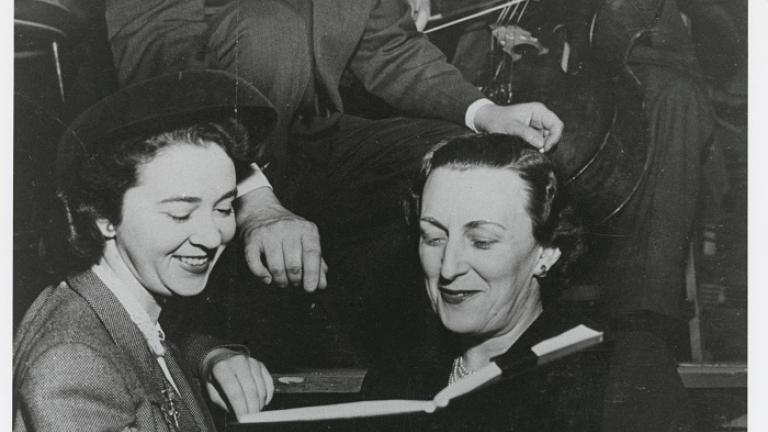
Hector Crawford, Dorothy Crawford and Glenda Raymond c.1950
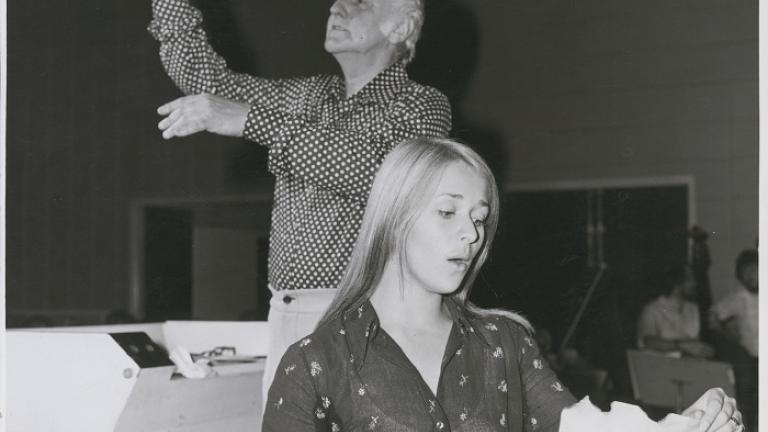
Hector Crawford conducting orchestra for Colleen Hewett, Music for the People Concert, c.1975
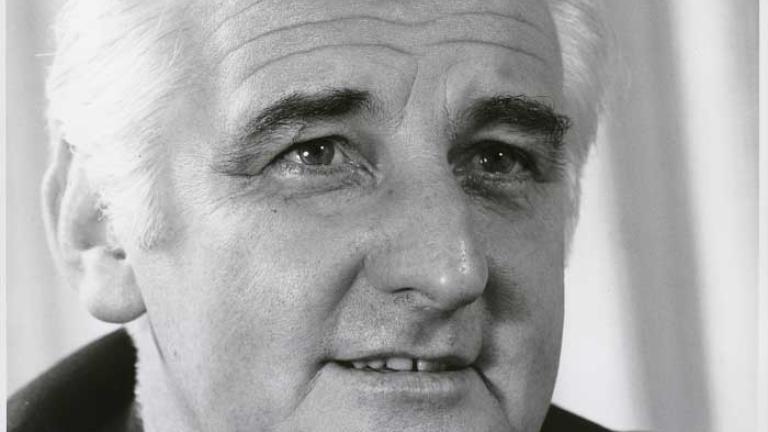
Hector Crawford c.1970
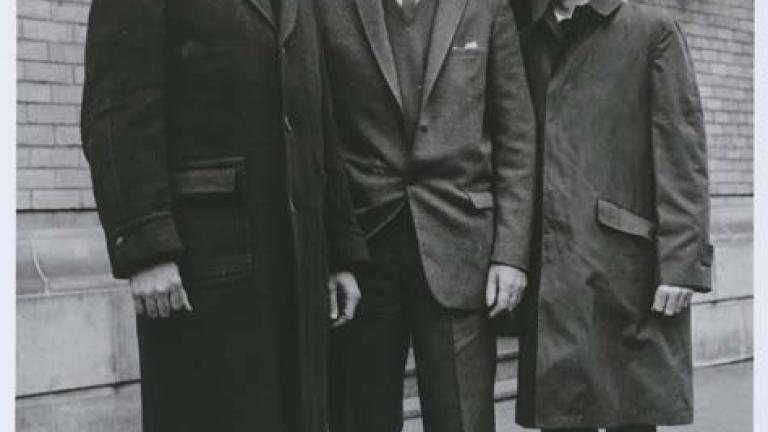
Homicide original cast: Jack Fegan, Lex Mitchell, Terry McDermott (1964)
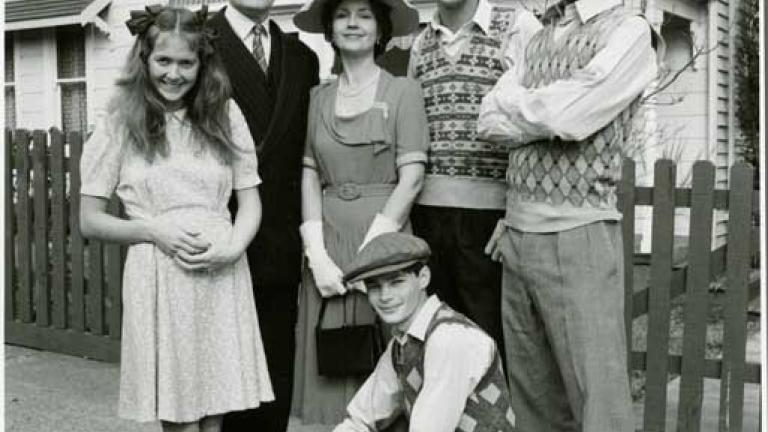
The Sullivans (1976-1982)
Fighting for Australian drama
Hector’s quest to produce Australian television drama remained elusive. By 1959 Australian television was awash with cheaper imports, mainly from North America. The fight for Australian content quotas had begun and Hector was at its forefront. As part of the campaign he published a booklet, Commercial Television Programmes In Australia, on 14 September 1959. It set out his concerns about the state of the industry, listed comparative figures of the number of hours of Australian produced content versus US content on commercial TV stations in Melbourne and Sydney across a week (see page 11 of booklet, below) and examined the results of TV’s first three years against the recommendations set out in the 1953 Royal Commission into Television and the Broadcasting and Television Act of 1942-1946. The booklet was distributed to members of parliament and, as Hector stated in an article for the Guide in The Sydney Morning Herald on 31 July 1989, to ‘anyone displaying the slightest signs of influence’ (see page 1).
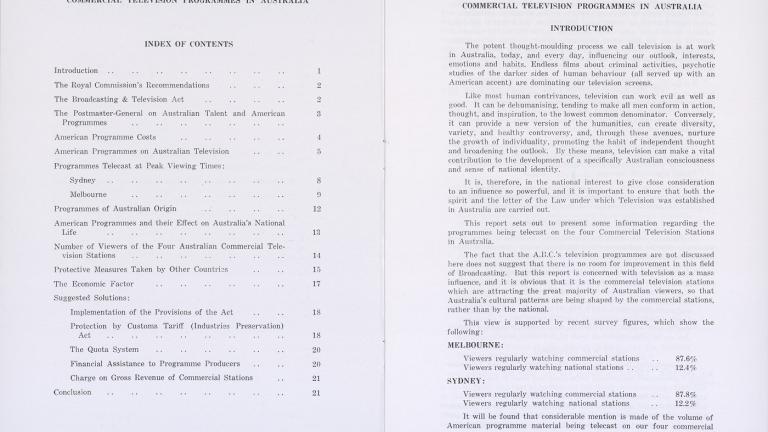
'Commercial Television Programmes in Australia', 14 September 1959 - index and page 1
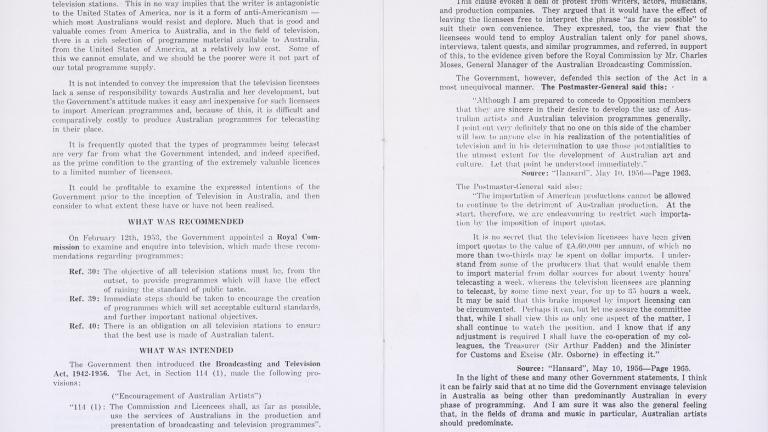
'Commercial Television Programmes in Australia', 14 September 1959 - pages 2 and 3
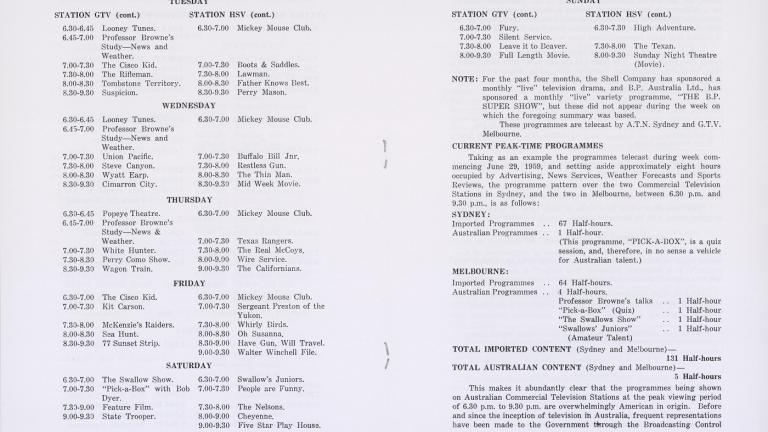
'Commercial Television Programmes in Australia', 14 September 1959 - pages 10 and 11
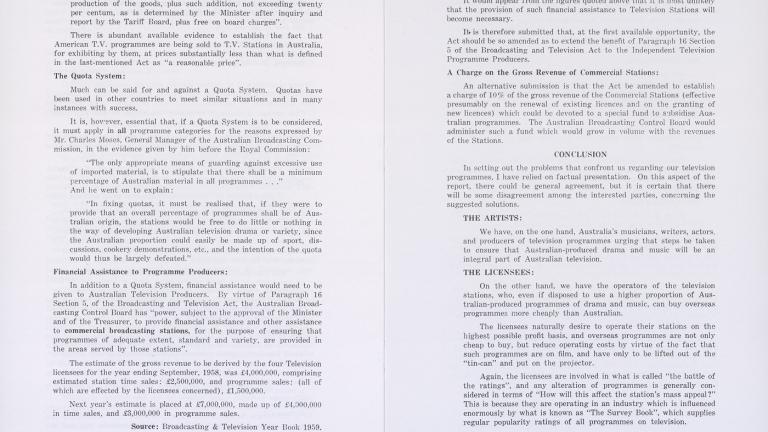
'Commercial Television Programmes in Australia', 14 September 1959 - pages 20 and 21
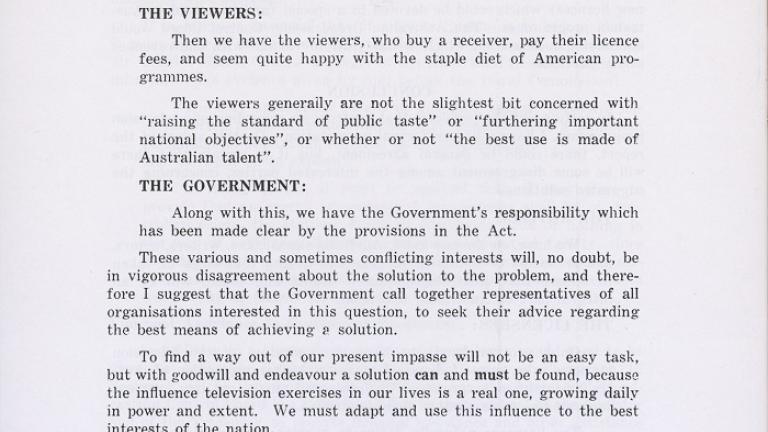
'Commercial Television Programmes in Australia', 14 September 1959 - page 22
Commercial Television Programmes In Australia by Hector Crawford, Melbourne, 14 September 1959. NFSA: 390574; courtesy of Crawford Productions
It would be four years from the beginning of television before an Australian quota was introduced in 1960, requiring that 40 per cent of all programs be local, with four hours in prime time per month – read more about the history of the introduction of quotas for Australian content.
Crawfords’ entry into drama came swiftly after the first round of the quota wars, with the live broadcast on HSV 7 of the Ray Hastings stage play Seagulls Over Sorrento (1960). The budget was, according to Ian Crawford, ‘about 3,500 pounds and that was a very big deal. Before that we had been limited to about 200 pounds a half hour, be it drama or anything’ (Beilby, p 136).
This was followed by Australia’s first commercial TV drama series, Consider Your Verdict (1961-1964), a show that also had its genesis as a Crawford radio production.
Listen to Hector Crawford’s description of the challenges Crawfords faced in the formative years of television, and their efforts to present Australian drama on TV, in this oral history interview conducted by Queensland academic Albert Moran, on 5 July 1979.
Hector Crawford, interviewed by Albert Moran. Courtesy of Albert Moran
NFSA title: 269137
Hector was also busy behind the scenes during this period, bidding for Australia’s third commercial television licence as part of Australian Telecasters Ltd. The bid was ultimately unsuccessful and the licence for ATV 0 was awarded to Sir Reginald Ansett.
Crawfords brought the following dramas to Australian TV screens in the 1960s and ’70s: Consider Your Verdict (163 episodes, 1961-1964), Homicide (510 episodes, 1964-1976), Hunter (65 episodes, 1966-1969), Division 4 (301 episodes, 1969), Matlock Police (229 episodes, 1970-1976), Ryan (39 episodes, 1972), The Last of the Australians (29 episodes, 1974), The Box (335 episodes, 1974-1977), Solo One (13 episodes, 1975), and Young Ramsay (26 episodes,1977, 1980). The Crawfords juggernaut was halted abruptly in 1974-1975, when all three commercial networks cancelled Crawfords’ highly successful and long-running police drama series Homicide, Division 4 and Matlock Police, bringing retrenchments to many of the 400 Crawford Productions staff.
Listen to Glenda Crawford’s description of this ’dark time’ in her oral history interview:
While this was a difficult period for Hector and the company, his resilience built from previous experience, entrepreneurship and enduring relationships helped him to return the company to success. At the centre of this success was The Sullivans, which ran for 1115 episodes across 1976-1982. In an article for The Australian Women’s Weekly, date 14 September 1977, Hector prophetically stated that this was ‘a series about everyday human experience and I believe this is where the future of drama lies’ (p 34).
Other productions from this period include All The Rivers Run (4 episodes, 1983), Bluestone Boys (24 episodes,1976), Bluey (39 episodes,1976), Carson’s Law (184 episodes,1983-1984), The Far Country (2 episodes, 1986), The Flying Doctors (221 episodes, 1986-1992), Hotel Story (7 episodes, 1977), My Brother Tom (2 episodes, 1986), Skyways (189 episodes, 1979-1981) and Special Squad (43 episodes, 1984-1985).
Hector’s legacy
Hector’s commitment to Australian television was celebrated often throughout his career, beginning with a Logie in 1969 for ‘Outstanding Contribution to Australian Television’, an award he would receive another five times across the 1970s. His productions also garnered over 70 Logies, 22 Sammys and numerous awards for scriptwriting.
In 1980 Hector was awarded a CBE for service to the Arts and, in 1984, he was also the first winner of the TV Week Hall of Fame Logie Award, an industry-voted category award in recognition of outstanding contribution of an individual to the Australian television industry.
In September 1984 the members of the Australian film and television industry also put their collective hands together with a testimonial dinner for Hector. Read Phillip Adams’ irreverent tribute to ‘The Silver Ghost’, published in this booklet for the event:
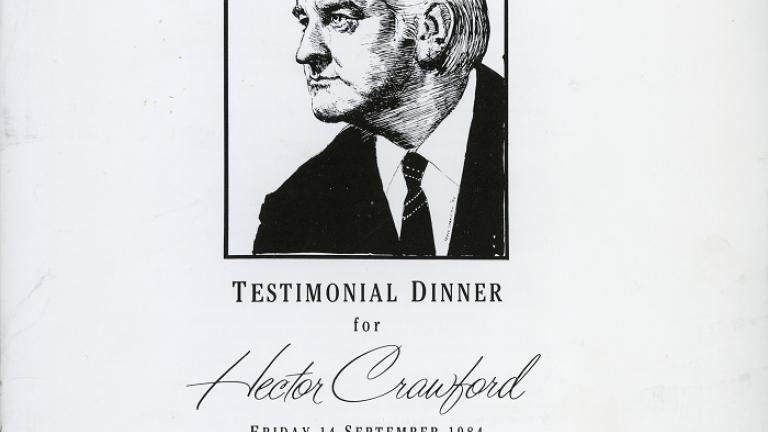
Testimonial Dinner for Hector Crawford, 14 September 1984 - Cover
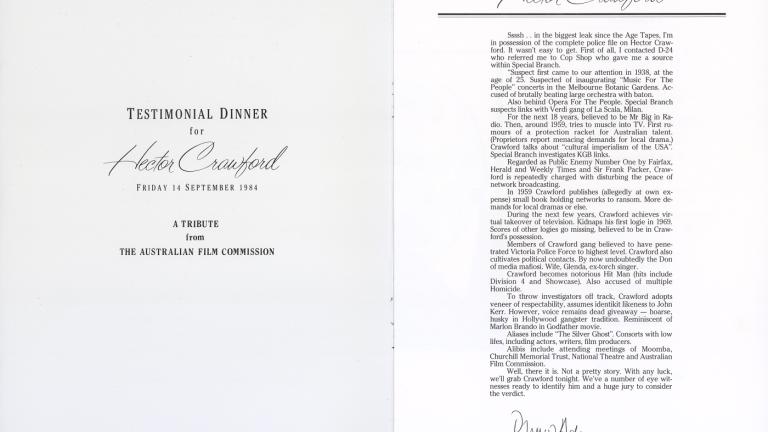
Testimonial Dinner for Hector Crawford, 14 September 1984 - Tribute by Mr Phillip Adams
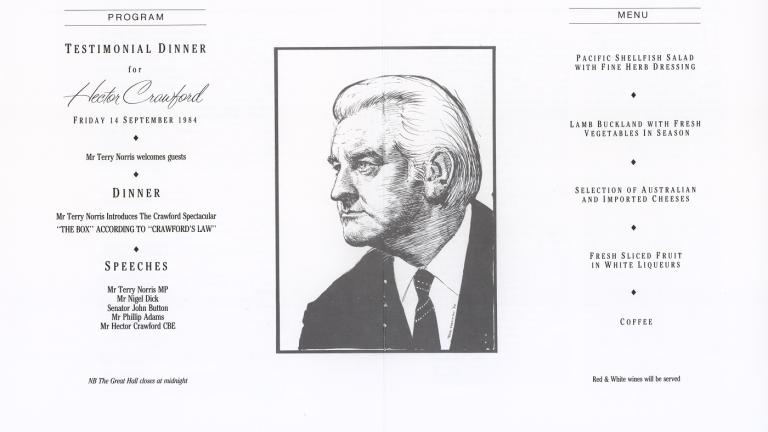
Testimonial Dinner for Hector Crawford, 14 September 1984 - Program
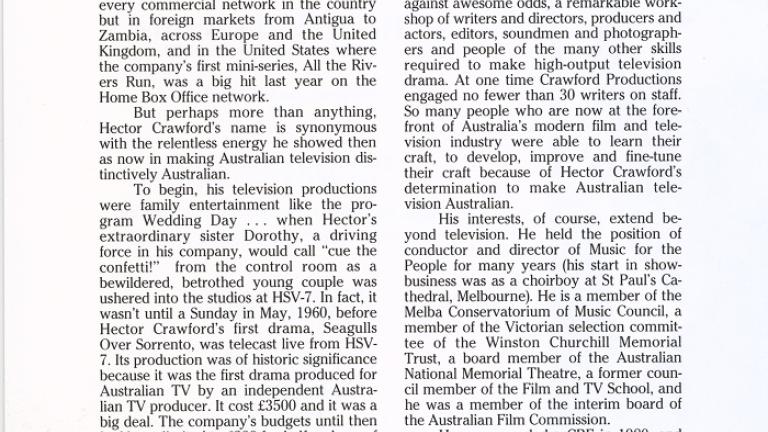
Testimonial Dinner for Hector Crawford, 14 September 1984 - Biography by Christopher Day
Testimonial Dinner for Hector Crawford, 14 September 1984. NFSA: 390574
In 1990 the Screen Producers Association of Australia (SPAA) gave Hector a Life Membership Award for outstanding contribution to the Australian independent film and television industry and his continued support of SPAA. In addition, at the Association’s annual conference, the Hector Crawford Memorial Lecture is conducted in his name.
With ongoing health issues Hector sold Crawford Productions in 1987 to Ariadne, formally retiring in 1989. In 1990 the company was on-sold to Bruce Gordon’s WIN Television Corporation Pty Ltd, which remains the owner today of the 4,500 hours of the Crawford Productions library holdings. The doors of the eight hectare Crawfords’ studio site at 259 Middleborough Rd, Box Hill, Victoria were finally closed in 2005 when it was sold and demolished and in its place now stands a Bunnings store. Crawford Productions under their new ownership has gone on to produce a range of productions, their most recent is Series 3 of the highly successful children series, The Saddle Club (see also The Saddle Club – Series 1 Episode 1, 2001 on ASO).
Perhaps the final words on Hector should come from those who worked with him across the Crawford Productions years in front of and behind the camera:
It’s also worth remembering Hector’s great wisdom, quoted from his interview with Albert Moran, that ‘TV is a gamble’.
Award-winning episodes from Crawford Productions police series Homicide, Division 4, Matlock Police and Cop Shop can be viewed at the Australian Mediatheque in Melbourne and copies can be requested for auditioning at NFSA’s access centres.
Citations
‘Australian Television is 21’, The Australian Women’s Weekly, 14 September 1977, p 34
Beilby, Peter (ed.) Australian TV: the First 25 Years, Thomas Nelson Australia in Association with Cinema Papers, 1981
‘The House Of Crawford’, The Sydney Morning Herald: The Guide, 31 July 1989, pp 1, 6 and 7
The National Film and Sound Archive of Australia acknowledges Australia’s Aboriginal and Torres Strait Islander peoples as the Traditional Custodians of the land on which we work and live and gives respect to their Elders both past and present.
